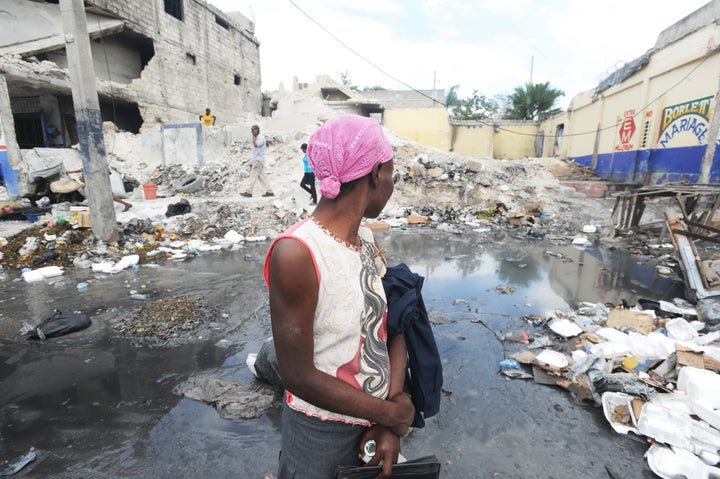
January 12 marks two years since a 7.0 magnitude earthquake exploded out from the epicenter of Léogane towards the capital of Port-au-Prince and the surrounding environs. The world has focused on rebuilding Haiti after this tragedy, but it's important not to lose sight of Haiti's rich traditions. One of them is soccer. While writing my novel set in Haiti, I've delved even more deeply into the country's love of the beautiful game. Haiti has several professional leagues, the most notable being Division 1 Ligue Haitienne, which has sent numerous players to ply their trade on overseas clubs. The international selection has had mixed success in the challenging CONCACAF federation but there are a few high water marks in its history. The most famous achievement was striker Emmanuel Sanon's legendary goal against Italy in the opening game of Group 4 in the 1974 World Cup. Against the run of play, Sanon pounced upon a perfect pass that sliced through three defenders, ducked his shoulder to the left at the last moment, and rounded keeper Dino Zoff to score the first goal of the tournament and end Zoff's 19 game streak of shutouts. Italy would go on to win 3-1, and Haiti was eventually knocked out of the tournament, but the goal lives on. Americans also still celebrate the goal by Joe Gaetjens (he played for the U.S. team while studying in New York on an academic scholarship) which upset England in the 1950 World Cup. His legacy has been taken up by striker Jozy Altidore, who was born in the U.S. to Haitian parents and currently plays on the Dutch Eredivisie and the U.S. national team. Today, Haitian soccer still deals with the aftermath of the earthquake. Thirty members of the Haitian Football Federation died during the quake. In February 2011, the Haitian U-17 team was expelled from a World Cup qualifying tournament in Jamaica because of fears of the cholera epidemic, ending their hopes of reaching the youth World Cup. Cholera swept into Haiti in October 2010 and was allegedly introduced by accident by UN peacekeepers from Nepal. Now the preventable and treatable waterborne disease has ravaged the country and taken over 5,300 lives. Only two members of the youth team fell sick (with malaria, actually) but the entire team was quarantined, leading to protests by Haitians at the Jamaican embassy in Port-au-Prince.
A team of amputees toured the world playing under unique rules (the goalies could be unimpaired). The team has become a metaphor for the perseverance of those affected by the quake -- although some team members were disabled before 2010.
The Sylvio Cator national stadium also collapsed and became the site of one of the largest camps for internally displaced persons. The Haitian government forcibly evicted camp residents in July 2011 in order to clear the field for use and installed an advanced lighting system to meet FIFA standards. The future of Haitian soccer is murky. Christian missionaries (google "Jesus, Haiti, and soccer") currently utilize the sport to impact people's lives, for better or for worse. Members of the national team play professionally in over 11 different countries, and the hope is that this formidable collection of talent will one day translate to international success. Haiti will continue to create exceptional players and its love for soccer will live on.
